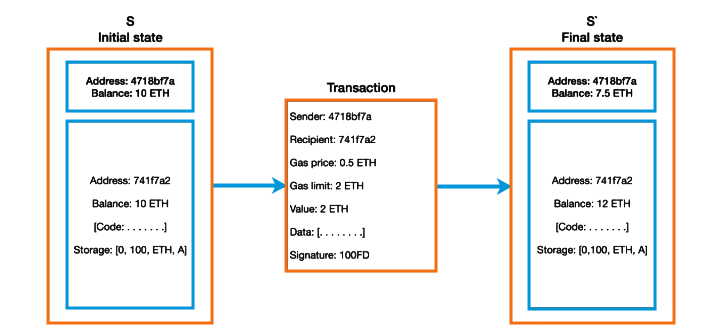
- Blockchain - Home
- Blockchain - Introduction
- History of Blockchain
- Blockchain - Technology
- Blockchain and Cryptography
- Blockchain Beyond Crypto
- Blockchain - Advanced Concepts
- Blockchain - Decentralization
- Blockchain - D-Apps
- Blockchain - DeFi
- Blockchain - Future Scope
- Smart Contracts in Blockchain
- Blockchain - Ricardian Contracts
- Blockchain - Oracles
- Blockchain - DAO
- Bitcoin
- Bitcoin - Invisible Gold
- How Bitcoin Works?
- Bitcoin - Network
- Bitcoin - Wallets
- Bitcoin - Innovations
- Ethereum
- Ethereum Alternate Cryptocurrency
- Ethereum Ecosystem
- Ethereum Virtual Machine
- Advanced Ethereum
- Ethereum Wallets
- Ethereum Miner Nodes
- Miscellaneous
- Blockchain - Double Spending
- Public Key Cryptography
- Blockchain - Hashing
- Bitcoin - Mining
- Blockchain - Chaining Blocks
- Blockchain - Proof of Work
- Blockchain - Network & Mining
- Blockchain - Incentives to Miners
- Blockchain - Merkle Tree
- Blockchain - Payment Verification
- Blockchain - Resolving Conflicts
- Blockchain - Privacy
- Bitcoin - Mitigating Attacks
- Blockchain - Conclusion
Ethereum The Alternate Cryptocurrency
Ethereum, similar to other blockchains, can be conceptualized as a state machine that operates on transactions. This concept is outlined in the Ethereum yellow paper authored by Dr. Gavin Wood.
The fundamental principle is that the Ethereum blockchain evolves from an initial state to a conclusive state through the incremental execution of transactions. The resulting final state is recognized as the definitive and unquestionable version of the blockchain's state.

Ethereum - How It Emerged?
In November 2013, Vitalik Buterin introduced the concept of Ethereum. The primary vision was to create a Turing-complete programming language that would enable the development of diverse applications, known as smart contracts, for blockchain and Decentralized Applications (DApps). This approach stands in stark contrast to Bitcoin, which features a more restricted scripting language that only supports essential functions.
The initial version of Ethereum, named Olympic, launched in May 2015, followed by the Frontier version in July of the same year. In March 2016, the Homestead version was released, incorporating several enhancements. The most recent update, Muir Glacier, was designed to postpone the difficulty bomb.
Ethereum Yellow Paper
The Ethereum Yellow Paper, authored by Dr. Gavin Wood, who is the founder of both Ethereum and Parity, provides a formal specification of the Ethereum protocol. This document allows anyone to create an Ethereum client by adhering to the outlined protocol specifications.
Although the paper may be difficult to comprehend for individuals lacking a background in algebra or mathematics, as well as those unfamiliar with mathematical notation, it offers a comprehensive formal specification of Ethereum.
The Ethereum Network
The Ethereum network operates as a decentralized peer-to-peer system where nodes collaborate to uphold the blockchain and facilitate the consensus process.
This network can be categorized into three distinct types based on their specific requirements and applications, which are detailed in the following sections −
The Mainnet
The mainnet represents the active, operational network of Ethereum, identified by a network ID of 1 and a chain ID of 1. These identifiers are essential for recognizing the network.
Testnets
Ethereum offers several testnets designed for testing purposes. These test blockchains serve as environments for evaluating smart contracts and decentralized applications (DApps) prior to their deployment on the live production blockchain.
Additionally, these test networks support experimentation and research initiatives. The primary testnet is known as Ropsten, which encompasses all functionalities of other smaller, specialized testnets created for particular releases.
Private Nets
As indicated by the name, private nets are exclusive networks established by generating a new genesis block. This scenario typically occurs in private blockchain networks, where a select group of entities initiates their own blockchain network, utilizing it as a permissioned or consortium blockchain.